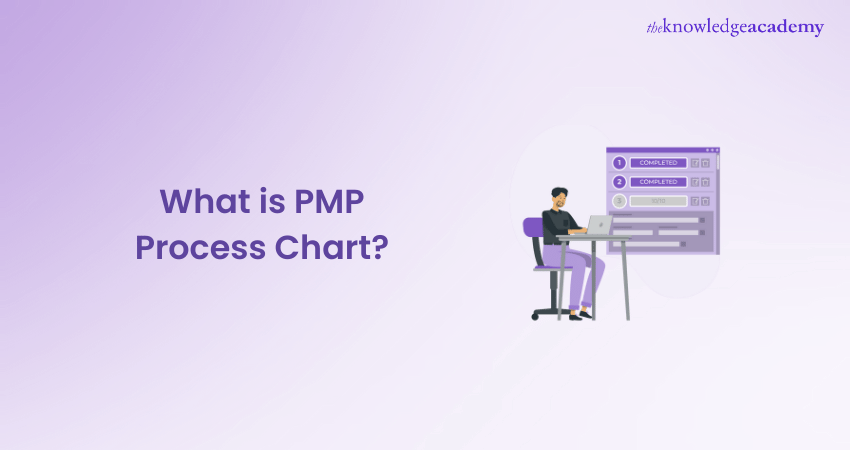We may not have the course you’re looking for. If you enquire or give us a call on 01344203999 and speak to our training experts, we may still be able to help with your training requirements.
We ensure quality, budget-alignment, and timely delivery by our expert instructors.

PMP Process ChartIf you have searched online for PMP Process chart or Knowledge Areas, you surely have completed reading a few pages of the Project Management Body of Knowledge (PMBOK) Guide. Well, if you want to gain an in-depth understanding of PMP Process Charts, you’re at the right place. This blog will help you understand everything related to Project Management processes, Process Charts, and Project Management Knowledge Areas.
If you are up for the PMP exam preparation, understanding the PMP Process Chart is crucial to passing the exam. Reading this blog will help you understand PMP Process Charts and Knowledge areas required to excel in the PMP Exam. Preparing a PMP Process Chart is also essential for delivering successful projects and bringing value to the organisation. Thereby, making it even more important for PMP aspirants to learn about PMP Process Charts.
Table of Contents
1) What is PMP Process Chart?
2) What are the Project Management Processes?
3) How to create and memorise the PMP Process Chart?
4) This is how your Process Chart Should look like
5) What are the five PMBOK Phases or Process Groups of Project Management?
6) The 10 Project Management Knowledge Areas
7) The difference between PMBOK Knowledge Areas and Process Groups
8) Conclusion
What is PMP Process Chart?
PMP Process Chart is an essential tool for anyone who aims to complete their task without any obstacles. This Chart provides a visual representation of the Project Management Processes.
The Process Chart illustrates how various activities in the project lifecycle are interconnected to each other. The activity flow helps understand the relationship between the components and how essential it is to finish the project. The Project Management Institute (PMI) has been a pioneer in helping organisations worldwide enhance their Project Management expertise. Additionally, PMI developed the Process Chart in order to help Project Management Professionals deliver successful projects efficiently.
What are the Project Management Processes?
In the PMBOK Guide, Processes are described as a set of actions performed to develop a product or service in the form of a project. Project Management processes ensure the appropriate flow of the project activities throughout its completion.
The Pros and Cons of PMP include understanding the structure of the PMBOK Guide, which is divided into ten parts, with each part covering a specific Knowledge Area. This guide outlines 49 processes, each associated with a particular Knowledge Area, and categorizes them within a corresponding Process Group.
Start your preparation from here – sign up for the Introduction to Project Management course!
How to create and memorise the PMP Process Chart?
Each part of the PMBOK Guide expands on each Knowledge Area in the Process Chart. Hence, it would help if you memorised the chart for the exam. Let's discuss how we can remember this:
Stage 1: Start by drawing a 6X11 chart.
Draw a table with 11 rows and 6 columns to develop the Process Chart.
Stage 2: Then move on to writing your Process Groups and Knowledge Areas
On the top-most row, write down all 5 phases of project management – Initiating, Planning, Executing, Monitoring and Controlling, and Closing
Use this short sentence to remember the Process Groups easily – “In Paris Emily May Cry Constantly”.
In the first column, list the ten Knowledge Areas.
The ten Knowledge Areas are –
a)
c) Project Schedule Management
f) Project Resources Management
g) Project Communications Management
i) Project Procurement Management
j) Project Stakeholders Management
Now your PMP Process matrix should look something like this:
Stage 3: Now fill these corners.
Fill these four processes in the Process Chart:
1) Developing the Project charter
This is how it will look after this stage:
2) Planning Schedule Management
4) Planning Quality Management
5) Planning Resource Management
6) Planning Communication Management
10) Planning Stakeholder Management






 Top Rated Course
Top Rated Course





 If you wish to make any changes to your course, please
If you wish to make any changes to your course, please


